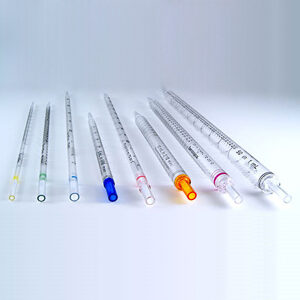
Serological pipets are widely used in scientific research, medical labs, and many other industries. They provide accurate and precise measurements for transferring liquids in volumes ranging from 0.1 mL to 100 mL.
Design and Sizes
These pipets are made from clear plastic or glass, allowing easy visibility of liquids. Graduation marks along the length help ensure precise measurement. They are available in multiple sizes, with the most common being 1 mL, 5 mL, 10 mL, 25 mL, and 50 mL.
How to Use a Serological Pipet
Using one is straightforward:
-
Make sure the pipet is clean and free of dust.
-
Hold it at an angle and place the tip into the liquid.
-
Slowly release the bulb to draw liquid up to the desired volume.
-
Remove the pipet carefully and dispense the liquid slowly into the intended container.
Safety and Disposal
Most serological pipets are disposable, which reduces contamination and ensures consistent results. Always follow lab safety protocols by wearing gloves, goggles, and a lab coat. Dispose of used pipets in the correct waste container after use.
Final Thoughts
Serological pipets may seem simple, but they are an essential tool in both research and medical applications. With proper use, they deliver reliable and accurate results, making them indispensable for everyday laboratory work.
Learn more: Serological Pipets

About the Author – Randy Cooper, MBA PCM
Randy Cooper brings more than 35 years of experience in marketing technology. He earned his Bachelor of Science in Information Technology with a concentration in web development from the University of Phoenix and later completed his MBA in Digital Marketing at Liberty University. In addition, he holds the Professional Certified Marketer (PCM) credential from the American Marketing Association.
In 2009, Randy launched Buzz My Biz, a technology consulting agency dedicated to delivering enterprise-level solutions to small and mid-sized businesses. Since then, he has helped organizations grow by combining digital strategy, marketing expertise, and technical innovation.
When he steps away from the keyboard, Randy enjoys cheering on the Atlanta Braves, spending time outdoors hiking, and working in his yard.


